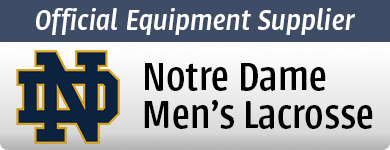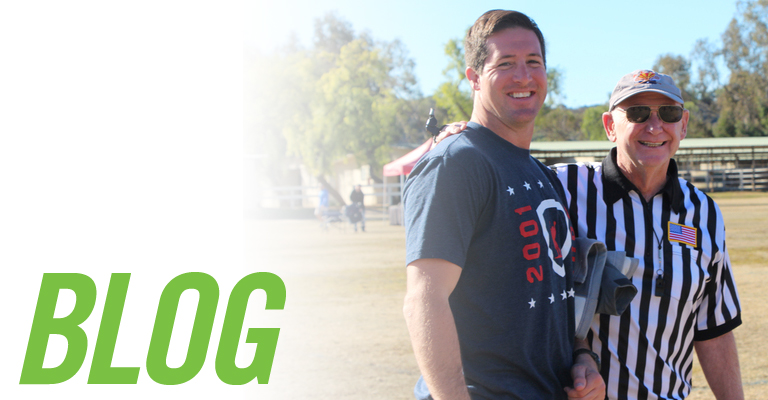Foss Is Boss: Five Step Recovery System
Training

PC: Anna Scipione
February 27th, 2015
With the season starting it is important that players know how to take care of their bodies on & off the field to ensure a successful season. You can be the greatest player in the country but if you are suffering from tight muscles or pulls then you will be on the sideline. Also, athletes can’t perform their best if they are not well nourished and hydrated. It is important that coaches stay on top of their athletes to keep them safe and performing their best. Below is our 5 step AdrenaFit Recovery System for athletes. I hope everyone finds it informative.
Self-Myofascial Release
The goal of SMR is to improve the quality of the soft tissue and increase range of motion. Throughout the season, lacrosse players will accrue trauma to the soft tissue and muscle soreness that will limit range of motion. A lot of times, this kind of damage are not felt until a certain area is pressed and you can feel a knot, or contusion. It’s similar to taking a rubber band, tying a knot in the middle of it, and as it stretches it becomes limited by the knot. If the rubber band continues to stretch, it will tear/snap above or below the knot. Our muscles work in a similar fashion; if there is a knot in the tissue it will limit movement. As we push harder it will eventually pull or tear.
Soft Tissue Work can be done using a foam roller, a massage stick, or even a lacrosse ball. The goal of the soft tissue work is to break up these knots by applying pressure to the affected muscle. At first it will be painful but through repeated use it will become easier. Also, if you are consistent in your SMR program you will feel less and less knots each time. You should feel your range of motion increase over time and feel fewer aches and pains.
I recommend doing some type of soft tissue work prior to practice or training on the areas that are the biggest concern. You will realize these areas as you start to foam roll. I would spend 1 minute on each muscle starting at your lower extremities and working up to the center of your body. If you’re experiencing a lot of soreness, like after a game or the first couple of practices, then I would recommend foam rolling in the morning and evening to increase blood flow to the affected areas as well as relieving the knots.
Movement Prep
The goal of the movement prep is three-fold. The first is to address any corrective issues we have determined in the movement assessment. Second, is to warm up the major joints of the body and prepare ourselves for the athletic activity. Last, we want to increase our core body temperature and break a little sweat.
The movement prep or dynamic warm up is important because it increase blood flow to the muscles, engages the central nervous system, and decreases the activation of the Gogli tendon. Proper movement prep will not only increase athletic performance but decrease the chance of injury. There have been countless studies done proving the effectiveness of an active warm up prior to exercise over static stretching.
Below is a sample of a Movement Prep that I would recommend. This warm up should take you no longer than 10-15 minutes and you should feel a difference on the field or in the gym.
- 3-way Shoulder Mobility (5/side)
- Trunk Rotations (10x)
- Overhead Squats (5x)
- Inchworms (5x)
- 3-way Lunge – Reverse/Side/Curtsy (5/leg)
- Single Leg Deadlifts (5/leg)
- World Greatest Stretch (3/leg)
- Fire Hydrants (5/leg)
- Walking Toe Touches > Skipping Toe Touches (15/15 yards)
- Cowboys – Forward/Reverse (15/15 yards)
- “A” Skips > “B” Skips (15/15 yards)
- Slow Shuffle > Fast Shuffle – Left/Right (15/15 yards)
- High Knee Carioca > Quick Step Carioca – Left/Right (15/15 yards)
- Jog > Sprint (15/15 Yards)
- Back Pedal > Sprint w/ Pivot – Left/Right (15/15 yards)
- 70% Sprint (30 yards)
Stretching
I recommend that athletes stretch after each workout, practice, or game. Some of the major benefits of static stretching are to increase muscle length, improve joint flexibility, and correct any muscular imbalances or deviations. As athletes practice and perform in competition they will overuse certain muscles that will cause imbalances. Over time these imbalances can cause serious injuries. By taking the time to stretch after practice and games we can perform preventative maintenance.
Static stretches should be held for 10-30 seconds with the overall stretching routine taking no longer than 10 minutes. If there is any pain or discomfort the stretch should be stopped immediately. If you have a strained or pulled muscle you should never stretch the area. RICE – Rest, Ice, Compression, and Elevation should be the used to handle any inflamed or injured muscle. Athletes can use stretching straps, a towel, or a partner to increase the range of motion in the stretch.
Nutrition
We break our nutrition into 3 stages; prior to the event, during the event, and after the event. An event can be a game, practice, weight lifting session, or speed-training workout.
The pre-event meal should consist of mostly of carbohydrates with a small amount of protein and fat. This meal should be consumed about 1-2 hours prior to the event. Make sure to drink at least 16 ounces of water with this meal. Everyone is different and you may need to tinker with the size of the meals and the time before the event to see what feels best.
Examples of pre-event meals are:
- Low-fat cottage cheese or greek yogurt with fruit and granola
- Turkey sandwich with cheese on whole wheat and a piece of fruit
- Peanut butter and jelly on whole wheat and a banana
- Whole wheat pasta with tomato sauce and 3-4 oz. of mozzarella cheese
During the event you want to make sure your energy level stays up. The goal should be to drink 4-6 oz. of some type of sports drink every 15-30 minutes after the first 45 minutes of physical activity. The purpose of these sports drink is to supply the body with some simple carbohydrates, potassium, and electrolytes. During a longer event like a game you may want to snack at half time if you feel jittery.
Examples of snacks during an event are:
- Piece of fruit like an apple, orange, or banana
- Small cookie
- Granola bar or energy bar
- Gel packs or gummy snacks like the ones made by Cliff Bar and Gatorade
The post-event meal is extremely important to aid in recovery and regeneration. This meal should consist of protein and carbohydrates and should be consumed within 30 minutes if the event.
Examples of the post-event meals are:
- 12-16 oz. of low fat chocolate milk
- Protein Shake mixed with apple juice
- Scrambled eggs with toast and jelly
- Whole wheat past with sauce, cheese, and lean meat
Hydration
Fluids are responsible for many actions that are essential for performance. Being hydrated helps regulate body temperature, cushion joints, and helps the body absorb nutrients, as well as a list of other actions that help us perform at our peak level. To make sure you are well hydrated you should avoid caffeine and high sodium foods. Make sure you are drinking 16oz. of water for every pound lost during an event. A simple way to know how much you lost would be to weigh yourself prior to the event and then right after the event. Another way to tell if you are properly hydrated is by looking at your urine. If it is clear or barely yellow then you are good to go. If not, it’s time to up your fluid intake. Athlete should be drinking at least ½ oz. of water for every pound of body weight per day. So a 160 lb. player needs at least 80 oz. of water a day.
By combining the 5 steps of the AdrenaFit Recovery System (soft tissue, movement prep, static stretching, nutrition, and hydration) you should have a solid routine to not only keep you healthy throughout the season but should help you perform better on the field.
Here at Adrenaline we realize the great importance these steps have on the athlete’s performance. Our hope is that we can help each player find his next level on and off the field of play. I hope this information is helpful and would love any feedback.



